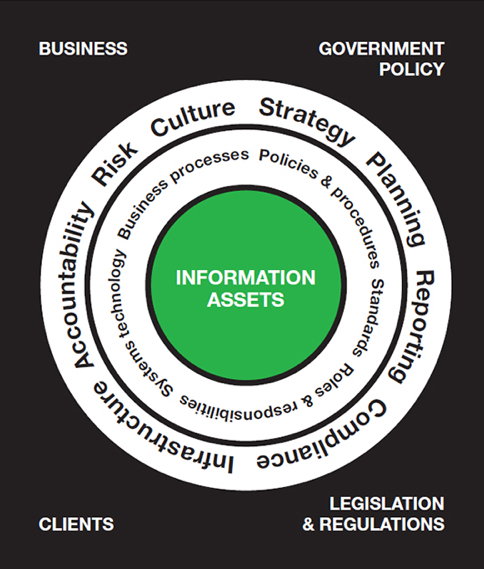
Image by: stevanovicigor, ©2017 Getty Images
Boss: "We’re going to all pitch in and clean up the 10,000 files on our shared drive this Friday and then reorganize it to make it easier to find stuff."
You: "Can I have a root canal without Novocain instead?"
We’ve been writing about shared drive clean-up on and off for the last year. The first article talked about knocking off the low-hanging fruit. The second covered the kinds of business rules to apply to a deeper dive into content remediation. Back in March, Charmaine covered the need for enterprise classification or taxonomy to bring structure to digital content and the foundations using a functional approach. Now that you’ve cleaned up the easy stuff and you’re ready to reorganize the valuable content that’s left, there’s a few “gotchas” to consider.
Classify like a user
The functional classification provides an enterprise-wide structure to group content in a manner that can be used for life cycle management and can be applied to shared drives, SharePoint, or an enterprise content management (ECM) system. For SharePoint and ECM, the classification will be surfaced as metadata. However, shared drives present a different challenge; they lack metadata, so all content codifying the record must be completed using folder and file names. Shared drives have to respect the classification but must also represent how end users find information.
User input and testing will be crucial to successful reorganization of shared drives—just as it is crucial to the design of metadata and searches in SharePoint or ECM.
Project or case files present unique challenges when organizing information. Project and case files aggregate applicable documentation; shared drive structures have to reflect the way that users logically think about storing and finding project/case information, which are often not synchronous with the classification structure. Project or case files do need to be covered in the retention schedules. Case and project files, and the records they contain, are retained and disposed of as a “container,” not document by document. For example, a project manager of a capital project will need to track costs associated with project phases, and he/she will inevitably want backup documentation in the project file. Documentation may include purchase orders, packing lists, and invoices. Yet, the accounting department will keep the same documentation, but the project documentation for a fixed asset will have a retention rule that may be different from accounting. Therefore, it will likely be necessary to duplicate some documents—as much as we try to avoid it.
In the paper world, records managers would develop file plans specific to each department or business area. File plans are also needed in the digital world, reflecting the part of the classification that applies to each department or business area, to make it easier for users to locate the activity or transaction that controls the documents being filed. The file plan must be mapped to the retention schedule but, more importantly, represent the way users will search for documents, not necessarily the way a classification or retention schedule represents information.
User input and testing will be crucial to successful reorganization of shared drives—just as it is crucial to the design of metadata and searches in SharePoint or ECM.
Project or case files present unique challenges when organizing information. Project and case files aggregate applicable documentation; shared drive structures have to reflect the way that users logically think about storing and finding project/case information, which are often not synchronous with the classification structure. Project or case files do need to be covered in the retention schedules. Case and project files, and the records they contain, are retained and disposed of as a “container,” not document by document. For example, a project manager of a capital project will need to track costs associated with project phases, and he/she will inevitably want backup documentation in the project file. Documentation may include purchase orders, packing lists, and invoices. Yet, the accounting department will keep the same documentation, but the project documentation for a fixed asset will have a retention rule that may be different from accounting. Therefore, it will likely be necessary to duplicate some documents—as much as we try to avoid it.
Case files are similar: Cases can involve litigation, claims, human health, social services, and dozens of other examples. Like projects, the documentation will often be duplicates of the records owner’s original and also contain many other original documents. Case files will often aggregate multiple records into one case. For example, the Health and Human Services organization’s case workers will manage family members as individual cases, but the family as a whole will be an aggregation of each family member. Some case information will apply to the family as a unit and others will apply to the individual family member. Documents that apply to an individual and the family unit have to be duplicated in each case file; likewise, documents that are generated for the family unit but also apply to multiple children will be duplicated in each family member’s case file.
Ugh! It’s no wonder these complex information management situations lend themselves to data-driven case management systems and/or ECM solutions.
While there are some “best practices” that can be applied across different organizations for projects and cases, each organization’s shared drive structure will have to reflect how your users think in order to make it easy to store and find information and so it can be managed by the records policy through its life cycle.
Next month, we’ll talk about how using SharePoint, ECM, or other repositories vastly improve the flexibility and control of information assets.
For more, don't miss Jim's special session, "The Next Wave of Automation & Scalability: How Far Can We Go with Smart Processes?," at DSF ’17, May 1-3, 2017 in Downtown Chicago.
Jim Just is a Partner with IMERGE Consulting, Inc., with over 20 years of experience in records and information management. Charmaine Brooks is an IMERGE Principal, a Certified Records Manager with the Institute for Certified Records Managers, and has 20-plus years of experience in the field of records and information management. Contact Jim at james.just@imergeconsult.com or follow him on Twitter @jamesjust10. Contact Charmaine at charmaine.brooks@imergeconsult.com.






